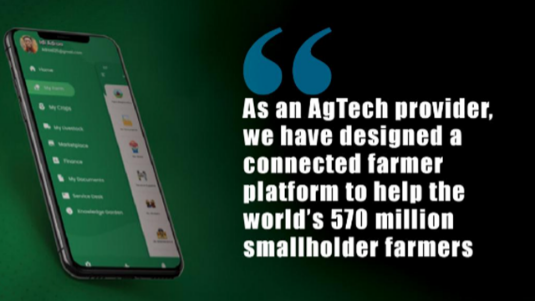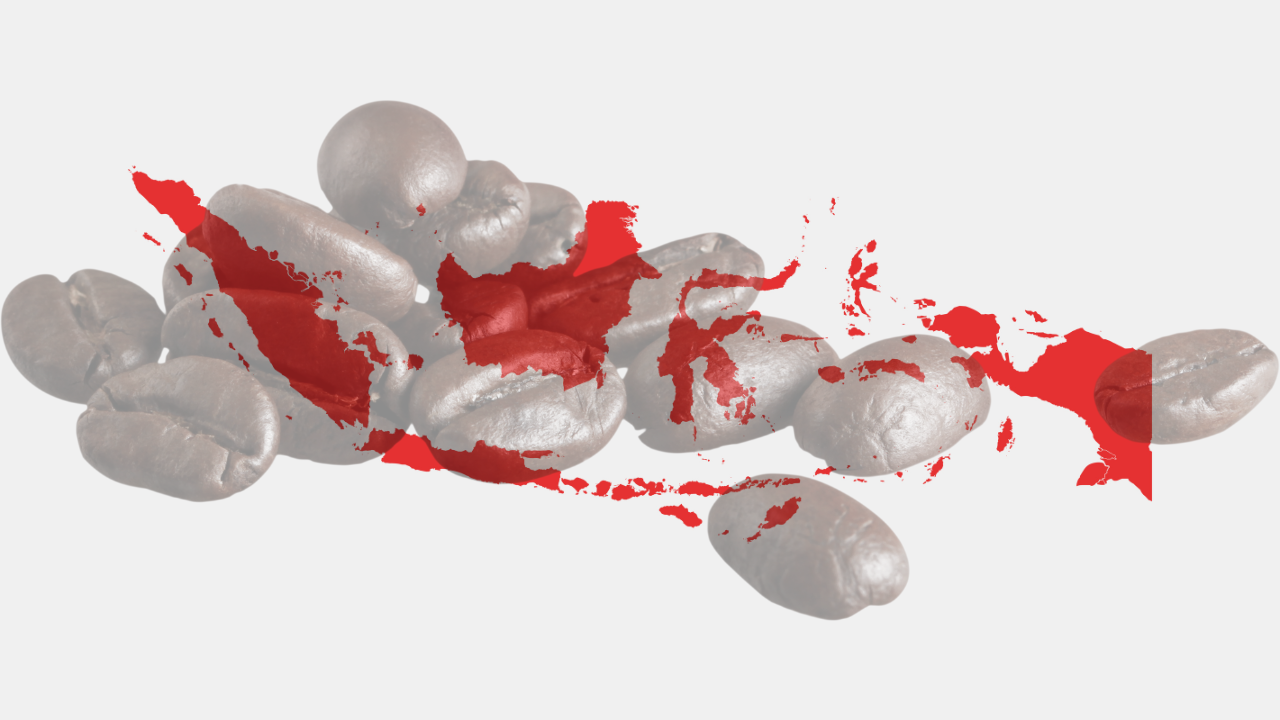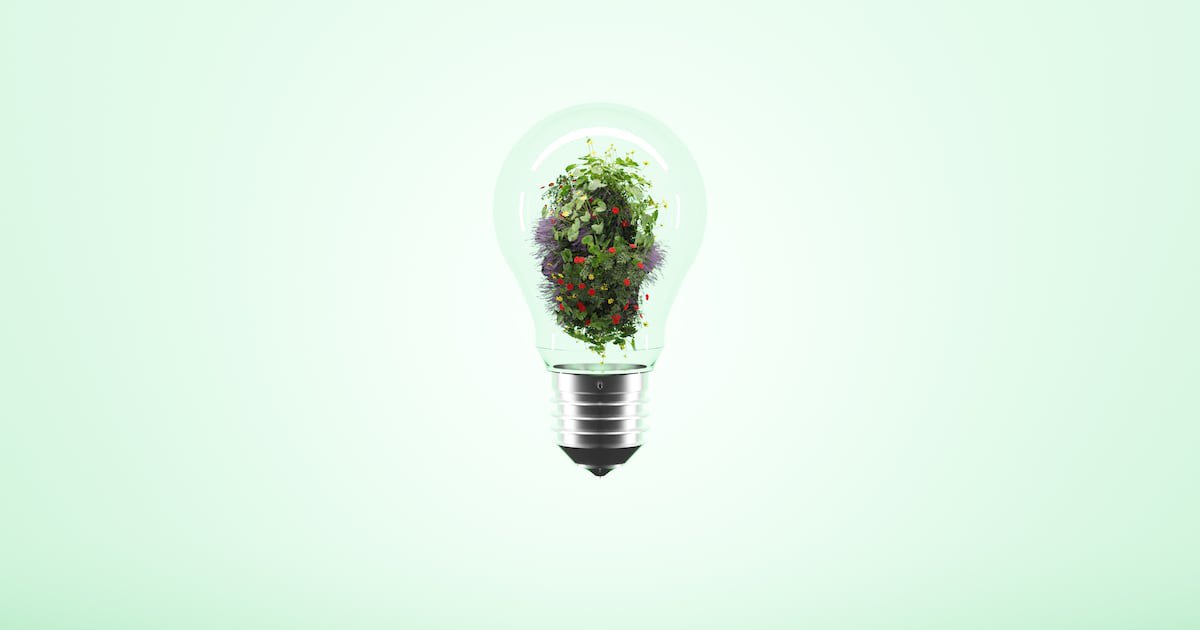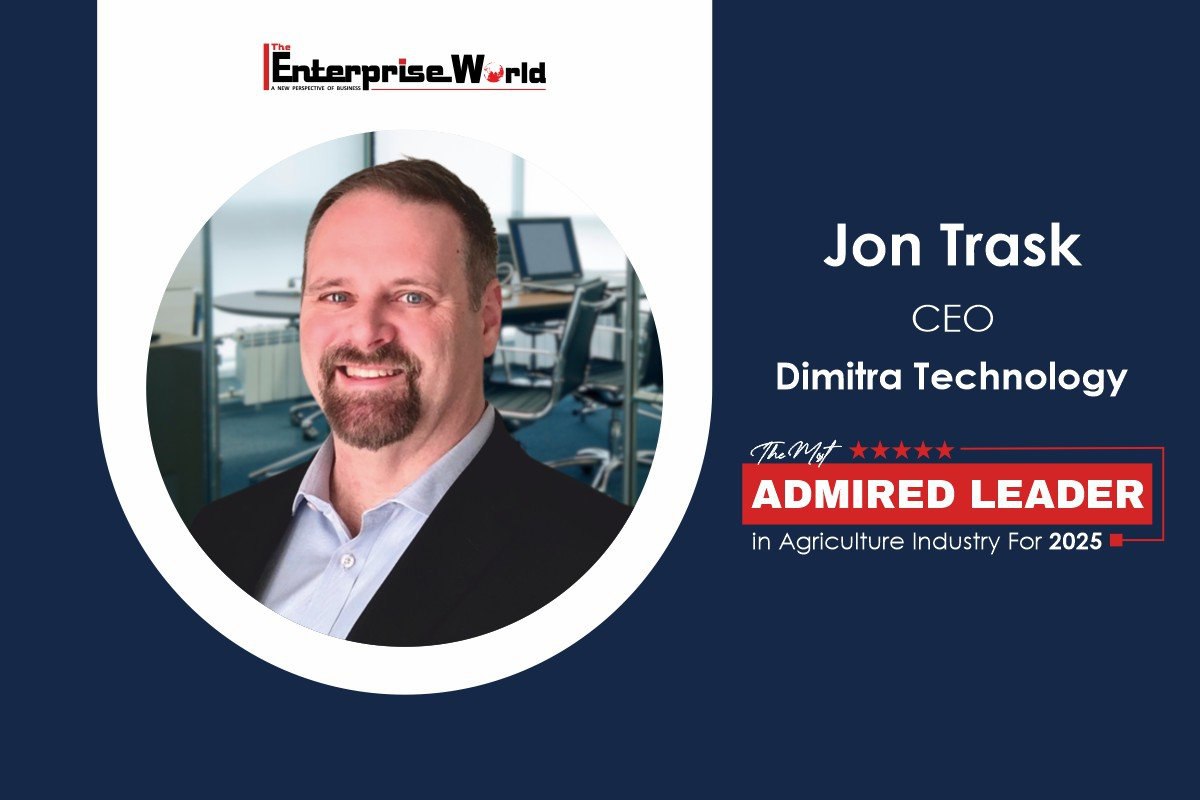Smallholder farmers around the world continue to face significant challenges, including low yields, limited access to markets, and vulnerability to climate change. These challenges often result in poverty, food insecurity, and environmental degradation. Jon Trask, the enterprising CEO of Dimitra Technology, tackles these challenges head-on through cutting-edge agricultural technology.
Under Jon’s visionary leadership, Dimitra empowers smallholder farmers to increase their productivity, connect to global markets, and adopt sustainable practices—emerging as the Most Admired Leader in the Agriculture Industry For 2025.
A Vision for Sustainable Agriculture
Jon Trask’s journey into technology and agriculture began with a strong foundation in supply chain and logistics. Early in his career, he worked across industries like food, automotive, and consumer goods, addressing logistical challenges through innovative technology solutions. However, during these projects, he identified significant inefficiencies at the root of the food chain—particularly with smallholder farmers.
These inefficiencies—limited data access, outdated systems, and disconnected supply chains—are seen in industries like coffee, which depend on millions of farmers linking to global buyers. Recognizing the need to modernize and enhance these processes, Jon founded Dimitra, a company dedicated to equipping farmers with user-friendly technology to promote food security, sustainability, and profitability.
“Dimitra’s passionate team aims to revolutionize the agri-food industry by developing innovative solutions for core challenges and fostering a more sustainable, connected agricultural future.”
A Farmer-Centric Approach to Tech
Jon emphasized that the technologies integrated into Dimitra’s platform—such as IoT sensors, satellite imagery, drones, and blockchain—are chosen with a farmer-first approach. The decision-making process begins by identifying the specific challenges farmers face, ensuring that the selected technologies directly address their needs and deliver impactful solutions.
Dimitra prioritizes tools that help farmers optimize resources, reduce costs, and improve decision-making. For example, satellite imagery and IoT sensors provide real-time insights into crop health and soil conditions, enabling data-driven actions. AI-powered models analyze this data to predict yields, detect pests, and identify optimal planting strategies, empowering farmers with actionable insights. Gathering crucial data points on the blockchain, Dimitra achieves transparency and compliance across the supply chain.
“The problem-first approach ensures that every innovation implemented serves a purpose, ultimately driving efficiency and sustainability in agriculture.”
Overcoming Rural Challenges
Connectivity remains a major obstacle in remote, mountainous regions. To tackle this problem, Dimitra ensured that its application works offline. Enabling farmers to input and access data in the absence of reliable internet services. In Ethiopia, coffee farmers utilize Dimitra’s offline functionality to sync data at local buying stations. Enabling seamless operations despite connectivity barriers. In some areas, Dimitra has even included the purchase of devices as part of the project plan to improve access.
Agricultural technologies are still in their infancy, creating a digital divide for small-holder farmers making it that much harder to build trust with farmers. Farmers are often hesitant to adopt new tools, especially given the rise in mobile apps and platforms, making it crucial for Dimitra to demonstrate the value of their solutions. Dimitra bridges the digital divide through localized workshops, on-ground demonstrations, and by illustrating tangible benefits to farmers. Ensuring they feel confident adopting new technologies.
Supporting Farmers in Transitioning to Sustainable Practices
Dimitra is committed to promoting long-term sustainability in farming through innovative technology. In South America for instance, Dimitra provides Surinamese farmers with real-time comprehensive farming data on their pineapple crop production and supply chains from end-to-end. By leveraging Dimitra’s offering, farmers have access to daily guidance on essential tasks, taking into account the growing cycle, weather, and other factors. From creating digital farmer profiles and registration with their demographic and plot details to tracking crop activities and managing harvests with traceability services, the platform aims to ensure that every step of the pineapple production process—from planting to harvesting—is traceable. The implementation of AI and scheduling tools enables farmers to optimize their practices, thereby prioritizing sustainability in their operations.
A major aspect of Dimitra’s sustainability approach is its carbon credit program. Which enables farmers to earn credits by adopting eco-friendly practices such as reducing emissions and improving soil health. These credits can then be converted into additional income, helping farmers earn a financial incentive to embrace sustainable methods. This program has helped increase farmers’ revenue by up to 30% per hectare, encouraging wider adoption of sustainable farming techniques.
Beyond carbon credits, Dimitra provides expert advice on fertilizer use, pest management, and disease control. To ensure farmers can balance productivity with environmental care. This guidance helps farmers maintain profitability while preserving the health of their land, supporting the long-term viability of their farms.
Dimitra’s impact extends to communities, as seen in Kenya, where the company is helping farmers transition to sustainable avocado farming. This shift to high-value crops has significantly boosted farmers’ revenue. From a few thousand to tens of thousands per hectare—while promoting a more balanced and resilient ecosystem. This combination of financial growth and environmental stewardship demonstrates Dimitra’s commitment to creating lasting, positive change in agriculture.










